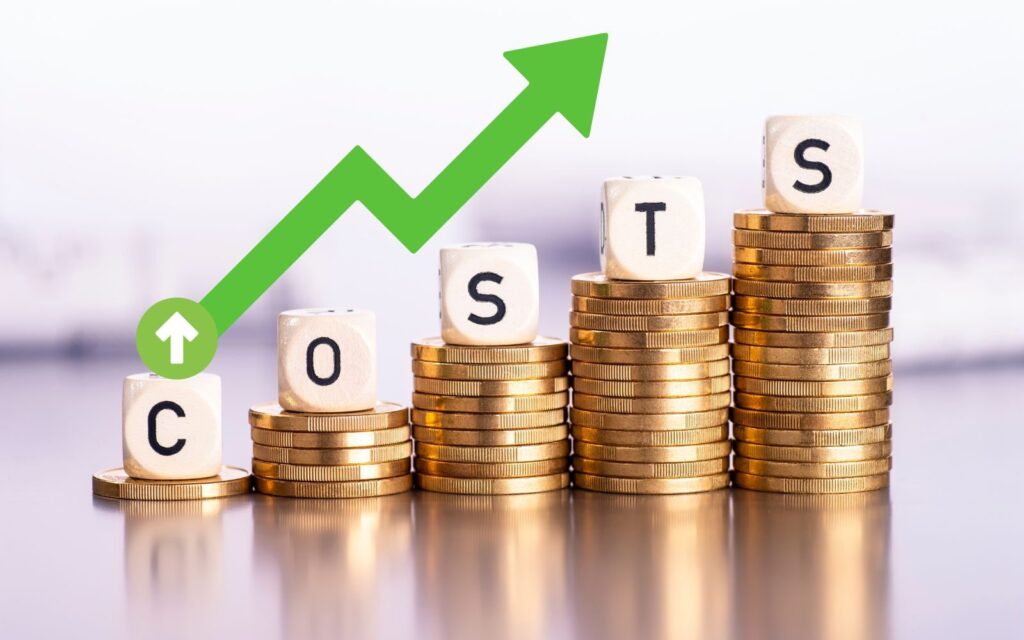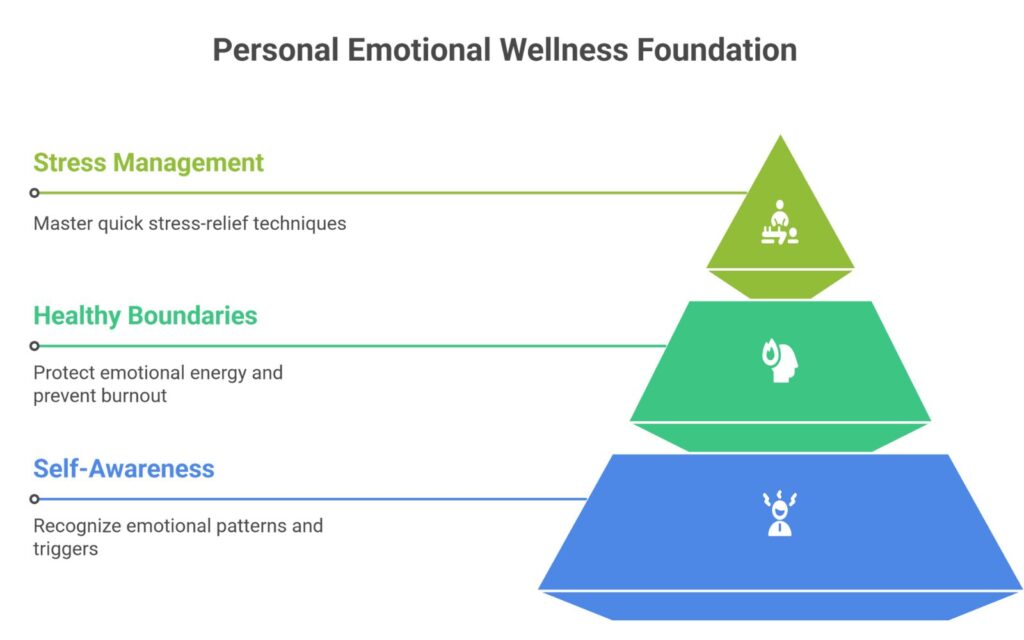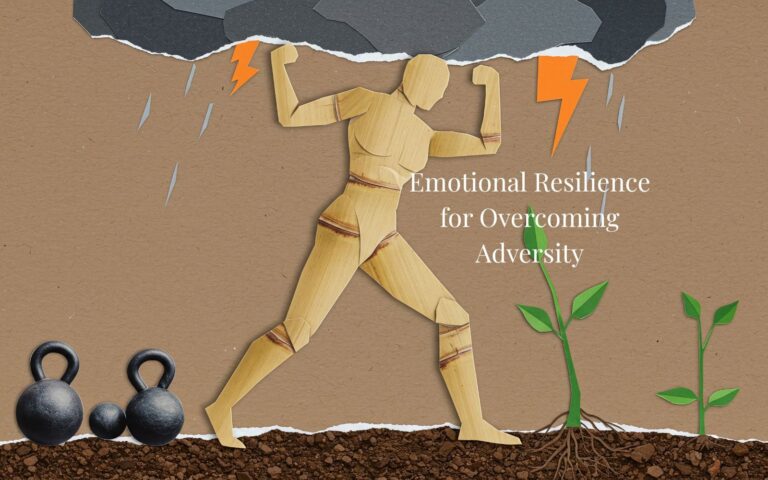Transform Your Work Life: The Ultimate Guide to Emotional Wellness in the Workplace

Did you know that 83% of employees suffer from work-related stress, costing U.S. businesses up to $190 billion annually in healthcare? This staggering statistic reveals a critical gap in modern workplace culture.
Emotional wellness in the workplace isn’t just a trendy concept-it’s an essential foundation for both individual success and organizational sustainability.
The challenge is clear: traditional work environments often prioritize productivity over people’s mental health, creating toxic cycles of burnout and disengagement.
As someone who has navigated corporate wellness programs for over a decade and witnessed the transformative power of emotionally healthy workplaces, I’ve seen firsthand how addressing emotional wellness can revolutionize both personal fulfillment and professional outcomes.
This guide will equip you with practical strategies to cultivate emotional wellness in the workplace, whether you’re an employee seeking better work-life balance or a leader building a healthier organizational culture.
Key Takeaways
- Emotional wellness directly impacts productivity, creativity, and job satisfaction
- Simple daily practices can significantly improve workplace mental health
- Creating psychologically safe environments benefits both individuals and teams
- Work-life integration strategies reduce stress and prevent burnout
Understanding Emotional Wellness in the Workplace

Emotional wellness encompasses your ability to understand, manage, and express emotions effectively while maintaining healthy relationships and coping with workplace challenges.
In professional settings, this translates to resilience during stressful periods, empathy in team interactions, and the capacity to maintain perspective during setbacks.
Research from the American Psychological Association shows that workplaces prioritizing emotional wellness see 25% lower turnover rates.
These environments foster psychological safety, where employees feel secure expressing concerns, sharing ideas, and making mistakes without fear of retribution. Building emotional intelligence for professional growth becomes essential for creating these supportive environments.
The workplace ecosystem thrives when emotional wellness becomes a shared responsibility rather than an individual burden.
The Hidden Cost of Emotional Neglect at Work

Ignoring emotional wellness creates a ripple effect throughout organizations. Stressed employees experience decreased cognitive function, reduced creativity, and impaired decision-making abilities.
The World Health Organization estimates that depression and anxiety disorders cost the global economy $1 trillion annually in lost productivity.
Beyond financial implications, emotional neglect damages workplace relationships and erodes trust. Teams become siloed, communication suffers, and innovation stagnates.
Employee engagement drops significantly, with Gallup reporting that only 32% of workers feel emotionally connected to their jobs.
The environmental parallel is striking-just as neglecting our planet’s health creates long-term consequences, overlooking workplace emotional wellness damages the organizational ecosystem’s sustainability. Creating eco-conscious spaces for emotional wellness can address both environmental and emotional health simultaneously.
Building Your Personal Emotional Wellness Foundation

Start with Self-Awareness
Developing emotional intelligence begins with recognizing your emotional patterns and triggers. Keep a brief daily log noting your emotional responses to workplace situations. This practice helps identify stress patterns and emotional blind spots.
Practice mindful check-ins throughout your workday. Set three random phone alarms and spend 30 seconds assessing your current emotional state when they ring. Incorporating mindfulness practices for workplace wellness can significantly enhance this self-awareness practice.
Establish Healthy Boundaries
Clear boundaries protect your emotional energy and prevent burnout. Communicate your availability clearly, avoid checking emails during personal time, and learn to say “no” to non-essential requests that compromise your well-being.
Create physical boundaries too-designate specific spaces for work activities if working remotely. This separation helps maintain work-life integration rather than allowing work to consume personal time. Learning how to prioritize family time with a busy career supports this boundary-setting process.
Develop Stress Management Techniques
Master quick stress-relief techniques you can use discreetly at work. Deep breathing exercises, progressive muscle relaxation, and brief mindfulness practices can reset your emotional state during challenging moments.
Build longer-term stress resilience through regular exercise, adequate sleep, and meaningful connections outside work. These foundational habits create emotional reserves you can draw upon during difficult periods. Exploring meditation techniques for stress relief and benefits of mindfulness for stress reduction can provide additional tools for your wellness toolkit.
Creating Emotionally Supportive Work Environments

Foster Psychological Safety
Leaders play a crucial role in establishing emotional wellness in the workplace through psychological safety.
Encourage open communication, acknowledge mistakes as learning opportunities, and model vulnerability by sharing your own challenges and growth experiences.
Implement regular check-ins that go beyond task updates. Ask team members about their well-being, workload concerns, and support needs. Creating how to create mindful break areas can provide physical spaces that support these emotional conversations.
Promote Work-Life Integration
Support flexible work arrangements that accommodate individual needs and life circumstances.
This might include flexible hours, remote work options, or compressed work weeks that allow for better personal time management. Implementing benefits of time-blocking for productivity can help employees manage their time more effectively while maintaining boundaries.
Encourage employees to use their vacation time and respect their time off by avoiding non-emergency contact. Model this behavior as a leader by taking your own time off and disconnecting from work communications.
Build Community and Connection
Create opportunities for authentic relationship-building beyond formal work interactions.
This could include team lunches, volunteer opportunities, or interest-based employee groups that foster genuine connections. Consider walking meetings for physical and mental health as a way to combine relationship-building with wellness.
Celebrate both professional achievements and personal milestones. Recognizing the whole person rather than just their work output strengthens emotional bonds and workplace satisfaction. Supporting physical well-being in the workplace alongside emotional wellness creates a holistic approach to employee health.
Practical Takeaways
- Schedule 5-minute mindfulness breaks every 2 hours to maintain emotional awareness
- Set clear communication boundaries and stick to them consistently
- Practice active listening in all workplace interactions to build stronger relationships
- Create a personal stress-management toolkit with techniques you can use anywhere
- Advocate for wellness initiatives if they don’t exist in your workplace
Consider implementing task prioritization strategies to reduce overwhelming feelings, and explore how to reduce stress naturally for additional wellness techniques.
Sustaining Long-Term Emotional Wellness

Emotional wellness in the workplace requires ongoing attention and adaptation. Regular assessment of your emotional health helps identify when adjustments are needed.
Consider quarterly personal wellness reviews where you evaluate stress levels, job satisfaction, and work-life balance.
Stay informed about workplace wellness resources and don’t hesitate to utilize employee assistance programs, mental health benefits, or professional development opportunities focused on emotional intelligence.
These investments in yourself benefit both your personal well-being and professional effectiveness. Learning about essential factors and benefits for mental health can guide your long-term wellness planning.
Remember that building emotional wellness is a journey, not a destination. Be patient with yourself as you develop new habits and advocate for the supportive workplace culture you deserve. Incorporating eco-friendly ways to reduce stress can align your personal wellness goals with environmental consciousness.
Your commitment to emotional wellness creates positive ripple effects that benefit your entire work ecosystem.
FAQs About Emotional Wellness in the Workplace
What are the first signs that emotional wellness in the workplace needs attention?
- Persistent feelings of dread about going to work
- Difficulty concentrating or making decisions at work
- Increased conflicts with colleagues or supervisors
- Physical symptoms like headaches, fatigue, or sleep disruption related to work stress
How can managers support emotional wellness in the workplace without overstepping boundaries?
- Create regular opportunities for open, non-judgmental communication
- Provide resources and information about available support services
- Model healthy work-life balance behaviors themselves
- Focus on creating systemic changes rather than trying to solve individual personal problems
What’s the difference between emotional wellness in the workplace and mental health support?
- Emotional wellness focuses on daily practices and environmental factors that support overall well-being
- Mental health support addresses specific clinical conditions or acute psychological distress
- Both are important, but emotional wellness is more preventive while mental health support is often treatment-focused
- Workplace emotional wellness benefits everyone, regardless of mental health status
How long does it take to see improvements from emotional wellness initiatives?
- Individual practices like mindfulness can show benefits within 2-4 weeks
- Organizational culture changes typically require 6-12 months to become established
- Long-term sustainable improvements often take 1-2 years to fully integrate
- Consistency in implementation is more important than speed of results
Can emotional wellness in the workplace really impact productivity and business outcomes?
- Studies show 25% improvement in productivity in emotionally healthy workplaces
- Reduced absenteeism and turnover rates directly impact bottom-line costs
- Enhanced creativity and innovation emerge from psychologically safe environments
- Customer satisfaction improves when employees are emotionally engaged and well






One Comment